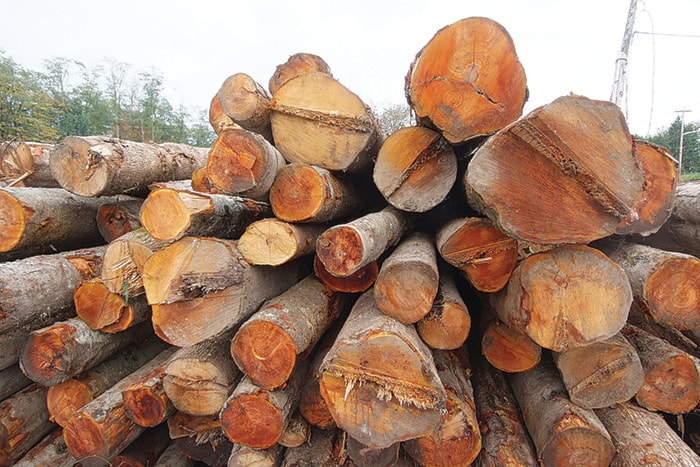The number of trees cut annually in Surrey has stabilized, however, the number of them cut down illegally is on the rise.
Surrey is issuing permits to cut down half the number of trees it did before the recession hit six years ago, but the number of renegade developers cutting down trees without proper permission is on the rise.
Mayor Dianne Watts said that because Surrey has become strict in what it requires for tree retention, some builders are operating outside the law.
According to figures provided by the city, there were 5,796 trees cut down last year.
That number, give or take 1,000 trees, is the same amount cut annually since 2008.
However, the number of trees razed without permission is on the rise. There were 31 trees damaged or removed without permits in 2011, almost 60 in 2012, and 92 last year – resulting in a total of $57,000 in fines for the year.
Watts said continuing to hit the builders with those fines will eventually have the desired effect. In the meantime, the strict tree retention policy has to remain in place, she said.
“I know in the past, builders would just come in and clearcut sites,” Watts said. “That’s just not what we want to do. It doesn’t help the city, it doesn’t help the project, and it certainly doesn’t help the neighbourhood.”
Trees have long been near and dear to the hearts of Surrey residents.
The public was outraged in 2005 when the city was clearing vast amounts of forest.
At the time, The Leader reported there was an average of 9,100 trees cut over the four years prior. Watts, then a councillor, referred to several areas of the city as a “moonscape” because of the large tree loss.
It became an issue in the mayoralty race in 2005, which Watts won. She enacted the Tree Protection Bylaw in 2006, but it failed to slow the speed of tree cuts.
In fact, the number of trees felled annually continued at a greater rate, with 33,300 bylaw-protected trees coming down in three years (2006-2008) – or 11,100 annually (22 per cent higher than in years prior to the bylaw).
The bylaw also has a provision for developments where the two-for-one tree replacement rule can’t be met. In those situations, a cash-in-lieu system requires a $300 fee be paid into a green fund for each tree that is not replaced.
Contributions to that fund have been accelerating, indicating the replacements are dropping.
Replacements in 2010 were an exception, where 2.27 trees were replaced for each one cut down.
Of the 5,796 trees cut down in 2013, there were 12,498 replacement trees required under Surrey’s Tree Protection Bylaw.
However, only 7,134 trees were replaced – and instead, $1.3 million was paid by developers into a “Green City Fund,” used for planting trees elsewhere in the city.
City staff have said that the reduction in trees cut was partly due to the drop in building and the type of development occurring, known as infill, where construction occurs on already cleared lands.
Which trees count?
Permits aren’t required for smaller trees.
The trees the city issued permits to cut down last year were at least 30 centimetres in diameter at breast height. Or they were one of a number of protected species, such as Arbutus, Garry Oak, Pacific Dogwood, Pacific Yew, Coast Redwood, Dawn Redwood, Giant Redwood, Maidenchair tree or Monkey Puzzle tree.
Trees such as cottonwood or alder are often referred by council and staff as “scrub” trees. They either don’t have a long life cycle or don’t survive development well.
However, if they are 30 cms diameter at breast height, they require a city permit.
City-initiated cuts don’t require permits, and therefore, are not part of the count.
